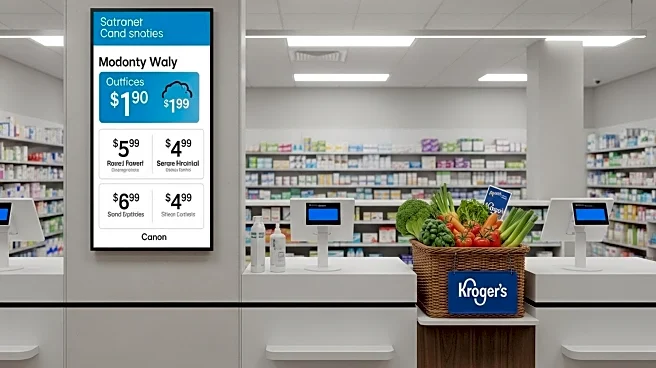What's Happening?
Rite Aid, a prominent national pharmacy chain, has officially closed all its locations following a Chapter 11 bankruptcy filing. The company, which was once a staple in the retail pharmacy sector, announced the closure on its website, thanking its loyal customers for their support over the years. This marks the second bankruptcy filing for Rite Aid since October 2023. The company had been struggling with financial challenges exacerbated by changes in the retail and healthcare landscapes. As part of its bankruptcy plan, Rite Aid has entered into agreements to transition its assets to other major pharmacy chains, including CVS Pharmacy, Walgreens, Albertsons, Kroger, and Giant Eagle. The company has also auctioned off its in-house ice cream brand, Thrifty Ice Cream, to Hilrod Holdings.
Why It's Important?
The closure of Rite Aid's stores represents a significant shift in the U.S. retail pharmacy landscape, affecting both consumers and employees. Customers who relied on Rite Aid for their pharmaceutical needs will need to transition to other providers, which could lead to disruptions in service. The closure also impacts the job market, as many employees face uncertainty regarding their employment status. For the broader retail and healthcare industries, this development highlights the challenges faced by traditional brick-and-mortar stores in adapting to evolving market conditions and consumer preferences. The transition of Rite Aid's assets to other pharmacy chains may consolidate market power among fewer players, potentially affecting competition and pricing in the sector.
What's Next?
As Rite Aid completes its closure process, the focus will shift to ensuring a smooth transition of customer prescriptions to other pharmacies. The company has promised to facilitate this process to minimize disruptions for its customers. Meanwhile, the receiving pharmacy chains will likely work to integrate the new customer base and assets into their operations. For former Rite Aid employees, the future remains uncertain, with potential opportunities for employment with the acquiring companies. The retail pharmacy industry will continue to monitor the impact of this consolidation on market dynamics and consumer access to pharmacy services.











